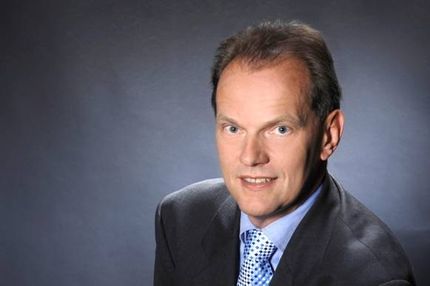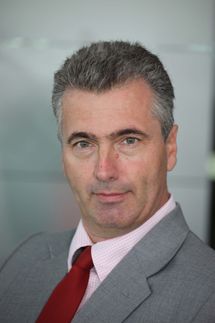Wacker Delivers Strong Sales and Earnings Growth in Q1 2010 Amid High Demand
Advertisement
Wacker Chemie AG has boosted its sales and earnings in the first quarter of 2010 amid strong customer demand. Q1 2010 sales at the Munich-based chemicals Group climbed 22 percent to €1,067.0 million (Q1 2009: €872.5 million) – chiefly due to volume growth. In contrast, sales performance was held back by lower prices and negative currency effects. Earnings before interest, taxes, depreciation and amortization (EBITDA) in Q1 amounted to €253.7 million (Q1 2009: €157.8 million). Up 61 percent on the prior year, EBITDA rose at almost three times the rate of sales. The higher demand greatly improved plant capacity utilization. As a result, specific manufacturing costs for many products were lower than in Q1 2009. For the first time in one and a half years, the Group’s EBITDA margin – at 23.8 percent – crossed the 20-percent threshold (Q1 2009: 18.1 percent). Wacker Group’s first-quarter earnings before interest and taxes (EBIT) reached €153.7 million, well over double the prior-year figure (Q1 2009: €58.2 million). Accordingly, Wacker’s EBIT margin rose from 6.7 percent in the first quarter of 2009 to 14.4 percent in Q1 2010. Net income for the period amounted to €105.9 million (Q1 2009: €5.5 million). As a result, earnings per share reached €2.15 (Q1 2009: €0.17).
Wacker boosted its profitability in both its chemical and semiconductor segments. At the three chemical segments, EBITDA of €87.0 million (Q1 2009: €51.1 million) outstripped the prior-year figure by 70 percent. With EBITDA of €1.2 million, Siltronic has returned to a profitable level after four quarters with losses (Q1 2009: €-60 million). Despite lower polysilicon market prices, WACKER POLYSILICON succeeded in keeping its profitability very high. Its EBITDA in the first three months of 2010 came in at €157.5 million (Q1 2009: €168.1 million). Although 6 percent below the Q1 2009 record, EBITDA was well above the preceding quarters, which were affected by non recurring items.
The Wacker Group confirms its forecast for substantial full-year sales and earnings growth in 2010. If the global recovery continues throughout the year, sales are expected to cross the €4 billion mark. EBITDA is forecast to be much higher than in 2009.
“After the challenges of the last several months, Wacker has made a very good start to fiscal 2010,” said Group CEO Rudolf Staudigl in Munich on Thursday. “Volumes, sales, and earnings are well above the prior year figures. We are benefiting from acting decisively at an early stage, improving our cost structures and increasing our competitive edge. And we will stay on this course as the economy recovers. We continue to work on improving the earnings situation at Siltronic. In our chemical segments, we will focus on boosting capacity utilization even further. And we continue to invest heavily in our polysilicon business to tap into market growth and meet customer demand for top-quality material.”
Regions
Like the world economy, Wacker’s first-quarter performance varied widely across the various economic regions. In Germany, sales stayed roughly at the prior-year level, reaching €219.1 million during the first three months of 2010 (Q1 2009: €220.8 million). Solar-industry sales are the key reason here, with the focus having shifted further toward Asia. Business clearly picked up, however, in the rest of Europe, where January-through-March sales climbed some 30 percent to €261.8 million (Q1 2009: €202.0 million). In comparison, growth in the Americas was moderate, with sales rising nearly 15 percent to €185.8 million (Q1 2009: €162.3 million). First-quarter business in Asia was very healthy. Wacker boosted sales there by about 37 percent to €364.8 million (Q1 2009: €267.0 million), with over half of Asian sales coming from China (including Taiwan). Accounting for 34 percent of total sales, Asia is by far WACKER’s most important sales region. In the other regions, consolidated sales increased 74 percent to €35.5 million (Q1 2009: €20.4 million).
Investments and Net Cash Flow
In recent months, Wacker has successfully completed or is currently ramping up several large investment projects aimed at expanding its global market presence. As a result, first-quarter investment spending dropped 44 percent year over year. In total, Wacker invested €98.3 million worldwide from January through March 2010 (Q1 2009: €176.8 million). One spending focus was the polysilicon plant currently under construction at Nünchritz (Saxony). Another was the development of pyrogenic silica production facilities at Zhangjiagang (China). Despite high investments, first-quarter net cash flow was clearly positive at €54.6 million (Q1 2009: €70.9 million).
Employees
Groupwide, Wacker had 15,733 employees on March 31, 2010 (Dec. 31, 2009: 15,618), a rise of 1 percent. The increase stems from higher staffing needs due to accelerating demand and to ongoing expansion projects, especially at WACKER POLYSILICON. At the end of March 2010, Wacker had 11,979 employees in Germany (Dec. 31, 2009: 11,925) and 3,754 at its international sites (Dec. 31, 2009: 3,693).
Business Divisions
In Q1 2010, WACKER SILICONES boosted its total sales by 39 percent to €367.0 million (Q1 2009: €264.9 million). In virtually all business areas, new orders were very strong and sales reached record levels. Nevertheless, prices are under pressure in some product segments. Driven by strong demand, production-capacity utilization in the quarter under review was markedly above the Q1 2009 level. In several facilities, the utilization rate reached up to 90 percent. As a result, specific production costs declined, positively impacting the division’s earnings. On the downside, earnings were held back by partially lower product prices, higher costs for methanol (a raw material) and exchange-rate effects. Overall, WACKER SILICONES posted Q1 2010 EBITDA of €62.1 million – more than double the prior-year figure (Q1 2009: €27.7 million). The EBITDA margin for the January 1 to March 31, 2010 period correspondingly rose to 16.9 percent (Q1 2009: 10.5 percent).
WACKER POLYMERS’ performance was subdued in the first quarter of 2010. At €170.8 million, sales were broadly on a par with the previous year (Q1 2009: €172.3 million). The harsh winter meant that construction-sector demand only picked up tangibly toward the end of the quarter under review. Asian markets were the main catalysts of demand. Overall, Q1 2010 sales of dispersible polymer powders were about 10 percent up on the prior-year quarter, but prices remained under pressure. WACKER POLYMERS generated EBITDA of €20.1 million during the first three months of 2010 (Q1 2009: €21.5 million). With an EBITDA margin of 11.8 percent (Q1 2009: 12.5 percent), the division’s profitability was slightly below the prior-year quarter. Along¬side lower prices for dispersible polymer powders and dispersions, higher costs for ethylene (a raw material) slowed earnings.
In Q1 2010, WACKER BIOSOLUTIONS generated total sales of €34.4 million (Q1 2009: €21.6 million). This 59 percent rise mainly stems from the reorganization of the Group’s chewing gum base activities, which were transferred from WACKER POLYMERS to WACKER BIOSOLUTIONS in mid-2009. Additionally, sales of cysteine, cyclo¬dextrins and acetylacetone were higher than a year ago. WACKER BIOSOLUTIONS posted Q1 2010 EBITDA of €4.8 million (Q1 2009: €1.9 million). Its EBITDA margin climbed to 14.0 percent (Q1 2009: 8.8 percent).
With total Q1 sales of €323.9 million, WACKER POLYSILICON beat its prior-year record by 3 percent (Q1 2009: €315.0 million). Production volumes in the first three months of 2010 rose to a new record level, supported by additional polysilicon capacity from Expansion Stage 8 (currently in the ramp-up phase). Thanks to the high quality of the division’s hyperpure polycrystalline silicon, the entire output could be placed on the market at attractive prices amid intensifying competition. Although market prices for polysilicon are lower than a year ago, average prices have stabilized since the fourth quarter of 2009. Despite the market-price decline compared to Q1 2009, WACKER POLYSILICON remained highly profitable from January through March 2010 and achieved an EBITDA margin of 48.6 percent (Q1 2009: 53.4 percent). Earnings before interest, taxes, depreciation and amortization reached €157.5 million in the period under review. Although 6 percent down on Q1 2009 (€168.1 million), EBITDA was well above the preceding three quarters, which were impacted by non recurring items to some extent.
Siltronic profited from a strong rise in silicon-wafer demand during Q1 2010. The division generated total sales of €219.1 million – up 74 percent against the prior-year period, which was especially weak (Q1 2009: €126.0 million). Compared with Q4 2009 (€184.4 million), Siltronic’s sales grew 19 percent. Wafer sales by surface area sold tripled year over year. Plant-capacity utilization was correspondingly high, averaging 80 percent. For some product types, plants reached full capacity. On the earnings side, Siltronic also reported substantial growth for Q1 2010. Earnings were primarily spurred by the marked increase in capacity utilization compared to a year ago. Having posted a negative EBITDA of €-60.0 million in Q1 2009, Siltronic generated EBITDA of €1.2 million in Q1 2010. EBITDA had still been negative in the fourth quarter of 2009 (€-22.6 million). The EBITDA margin is now 0.5 percent (Q1 2009: -47.6 percent).
Outlook
After the sharp downturn of 2008 and 2009, the global economy is back on a growth course. The latest consensus forecast is for a rebound in global economic output in 2010. The predicted global recovery will bring a further boost in demand and create fresh sales opportunities in Wacker’s main sectors of interest, including chemicals, construction, electronics and photovoltaics.
If the world economy continues to grow during the remainder of the year (as forecast), Wacker expects sales volumes to increase at every division during 2010. Regionally, Asia will remain the key growth driver. From today’s viewpoint, the Group’s full-year sales are expected to exceed €4 billion in 2010, with year-over-year EBITDA growing substantially.































































